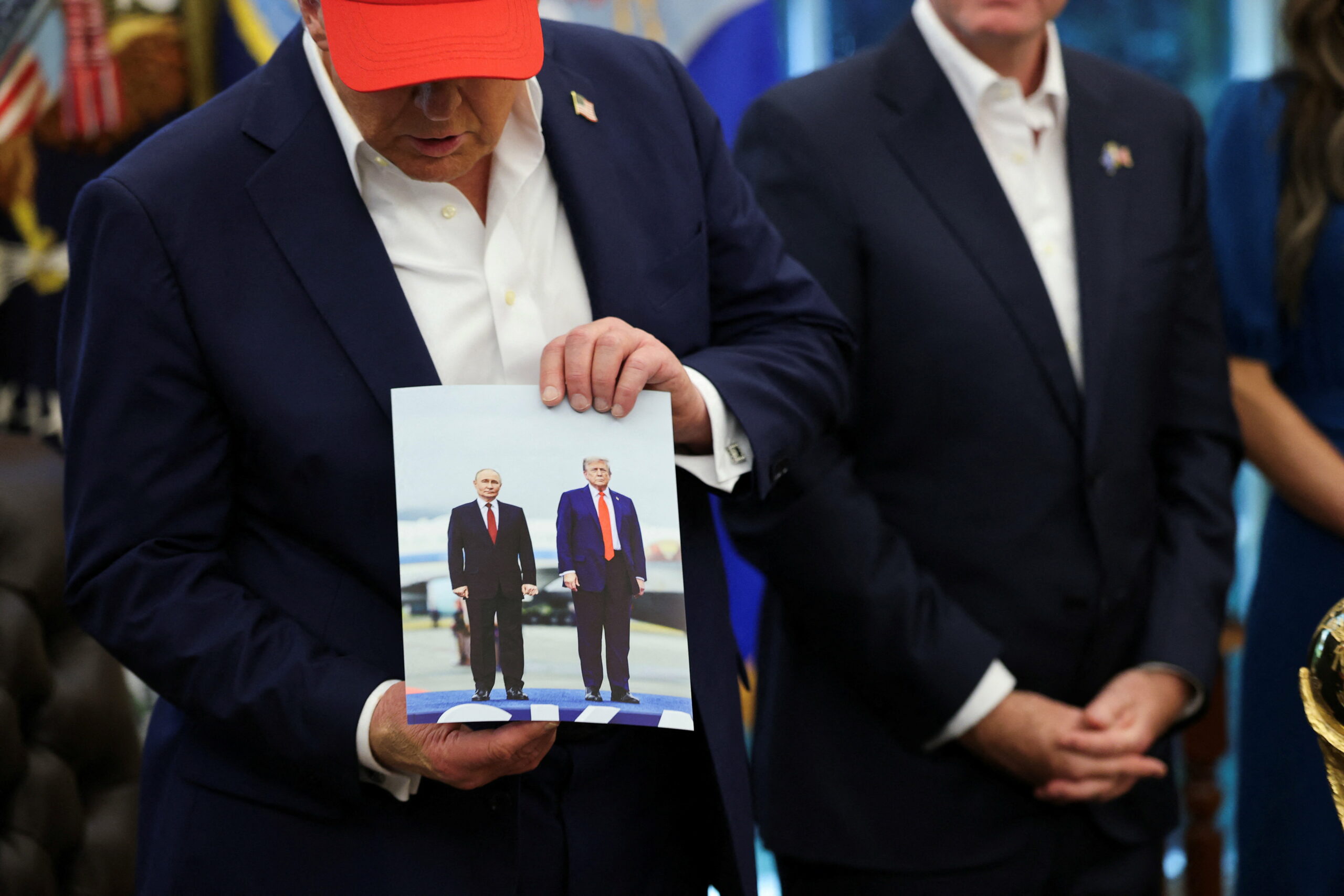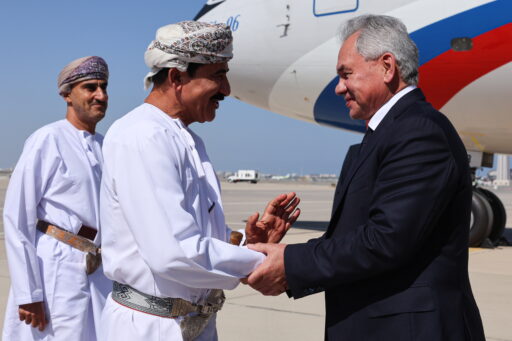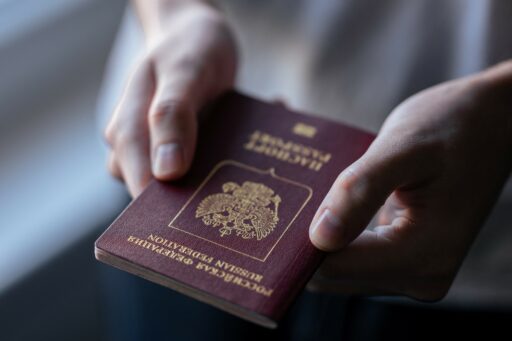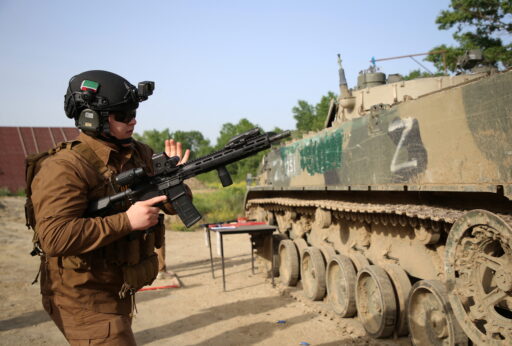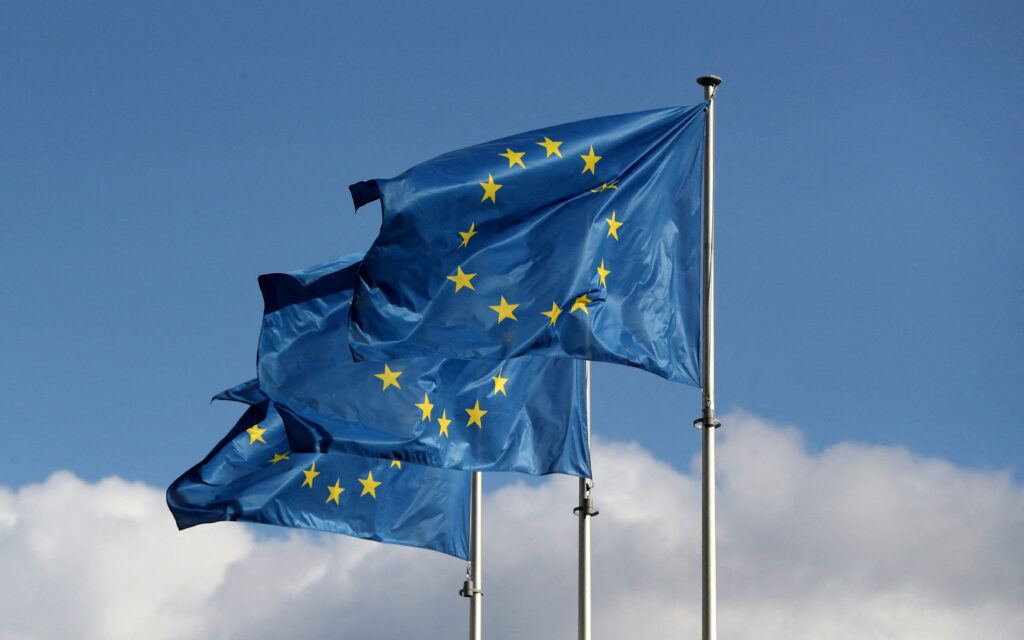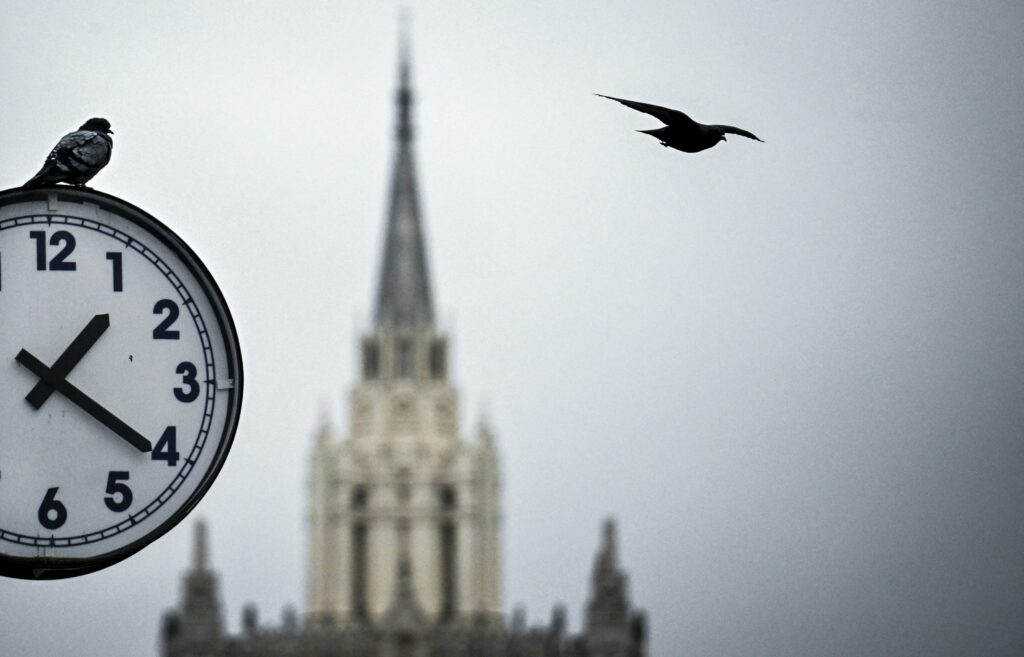For nearly a year now, Russian diplomacy has been holding its breath for a breakthrough in relations with the United States, betting that Donald Trump’s second term might still prove a boon for Moscow. In that time, Putin and Trump have spoken by phone eight times and met in person once—in Alaska back in August 2025. Russia’s Foreign Minister Sergei Lavrov and U.S. Secretary of State Marco Rubio have logged twelve rounds of talks: four face-to-face, eight over the line. By way of comparison, over the entire Biden presidency, Putin only connected with him six times.
You’d think that kind of frenetic pace would have yielded something tangible. Instead, everything has circled back to zero: Rubio accuses Moscow of having no interest in peace, while Peskov—channeling Putin’s line—tries to talk him out of it.
Moscow’s expectations for Russia-U.S. ties under the new Trump administration have swung wildly through 2025, like a sine wave—from euphoria to utter disillusionment. These days, it seems, no one’s nursing any rosy illusions about the potential here. Trump green-lights arms sales to Ukraine funded by EU countries, slaps sanctions on Rosneft and Lukoil, and Moscow’s response is a blunt warning: if it can’t hash out a real peace deal, it’ll keep fighting until the so-called «special military operation» achieves all its goals.
That said, it’s premature to write off the talks entirely. With Trump’s unpredictability and the ever-present chance of a sharp shift on the front lines, the topic could flare up again out of nowhere. To gauge whether there’s been—or still is—any real room for a deal, it helps to pin down and unpack the key demands and offers from both sides.
Russia’s Stance
The most recurring demand from Russian officials has been Ukraine’s renunciation of NATO membership. It’s come up no fewer than 16 times from Putin, Lavrov, Zakharova, and Peskov in 2025 so far. From Kyiv, Moscow wants neutrality enshrined in the constitution; from the U.S.—as NATO’s de facto leader—a legally binding pledge that the alliance will never even entertain Ukrainian accession. Trump has publicly said Ukraine won’t join NATO, but words aren’t enough for Moscow: it insists on a formal revocation of the 2008 Bucharest Summit’s invitation.
Moscow’s second core condition: recognition of Russia’s territorial gains—not just Crimea, annexed in 2014, but the full expanse of Donetsk, Luhansk, Kherson, and Zaporizhzhia oblasts. Statements from officials suggest this would extend even to districts in those regions that Russia doesn’t actually control. Trump once carefully floated the idea of legally acknowledging Crimea as Russian, but after getting no buy-in from the EU or Ukraine, he scrubbed that language from his pitches for a peace deal.
Third on the list: a total halt to arms supplies to Ukraine, encompassing any funding, training for Ukrainian troops, or sharing of intelligence. This came up especially sharply in talks about a possible ceasefire, with Moscow insisting that cutting off military aid to Kyiv be the very first step toward any truce. On paper, at least, Trump has mostly bent toward this one—U.S. weapons shipments to Kyiv are now footed by EU member states.
Fourth: a phased rollback of sanctions on Russia’s financial system, energy sector, other economic pillars, and select officials. In exchange, Moscow dangles the prospect of ramping up trade and investment. Some targeted relief has materialized (in the case of Rostec’s subsidiaries, for instance, which have funneled millions into Washington lobbying), but fresh penalties on Rosneft and Lukoil signal that the broader trajectory runs counter to what Moscow wants.
A notch lower in priority—but still significant—is Moscow’s push for formal pacts to freeze NATO’s eastward expansion altogether, barring any post-Soviet states from joining. At heart, Russia is angling for U.S. guarantees of its exclusive sphere of influence across the post-Soviet space—in Eastern Europe and, more broadly, northern Eurasia. In Moscow’s telling, this would right the «Gorbachev betrayal»: the supposed promise not to push NATO eastward that was broken after the Cold War.
That sphere would blanket Ukraine too, with Russia positioning itself as a lead guarantor of its postwar security—complete with an effective veto over all matters in that domain. Moscow hasn’t ruled out U.S. involvement in the guarantee system, but only if Russia retains veto power. Ukraine would also have to lock in its non-nuclear status.
A few other demands aren’t Ukraine-specific but can’t be divorced from the war talks. First, Russia is strong-arming Washington into extending New START, whose term expires in February 2026. From Moscow’s view, that could crack open discussions on broader strategic stability and arms control. Second, as a baseline, Russia proposes resetting ties to at least 2021 levels: normalizing diplomatic operations and, as sanctions ease, gradually rebuilding trade and civilian exchanges. This has seen the most concrete haggling and technical groundwork, though it’s stalled amid the talks’ overall collapse. Third, Russia is hawking a laundry list of cooperation angles—from the Arctic and space to the Middle East. Other potential tracks likely surfaced in the chats too. Putin, Lavrov, and the rest have hammered home one core message to Trump and his team: sort out the big-ticket Ukraine and strategic-security issues, and Russia will play ball—cooperating constructively wherever interests align.
The U.S. Position
For Russia, dialogue with the U.S. is make-or-break; for Washington, Russia-U.S. talks are just one piece of a crowded puzzle. Moscow sees America as its paramount partner—and adversary—while the U.S. treats Russia as an important but hardly central concern.
The Trump administration’s top ask: an immediate ceasefire in Ukraine. For months, U.S. diplomats chased a halt to the fighting at almost any cost, sans preconditions, hoping to kickstart peace talks amid the lull. The latest iteration called for freezing the conflict along current front lines.
The second condition: the return of occupied territories to Ukraine. Here, Trump and other U.S. officials often leaned on vague phrasing, leaving room for tacit—or even de facto—acknowledgment of some Russian gains. Washington appeared ready to accept a frozen conflict, effectively resigning itself to Moscow’s hold over substantial portions of Donetsk, Luhansk, Kherson, and Zaporizhzhia oblasts. It’s worth recalling that Trump once floated the idea of a territorial swap, though it garnered little traction in either Kyiv or Moscow.
Third: security guarantees for Ukraine, with a clear emphasis on Europe’s leading role in any postwar settlement. U.S. special envoy Steve Witkoff has already misread Putin’s remarks at least once, sparking debate over deploying European troops—a notion that left Moscow scratching its heads. Against this backdrop, it’s unclear just how much involvement Trump himself would commit to. More likely, he’d sign off on whatever arrangement the EU and Russia could jointly stomach.
The fourth demand: direct talks between Moscow and Kyiv—ideally face-to-face between Putin and Zelenskyy—brokered by Trump or in any format ensuring genuine, unfiltered engagement. Trump has repeatedly chided both leaders for dodging in-person meetings without pre-baked details on a peace process.
On thornier European flashpoints—like reparations or extraditing war criminals—Washington either lacks a firm line or keeps it deliberately supple and opaque. Broadly, the Trump team stands prepared to pivot back toward normalizing ties with Russia the moment the guns fall silent and even rudimentary peace mechanisms kick in. Even as it rolls out fresh sanctions on Russian oil majors, the administration keeps the door cracked for renewed negotiations.
Points of Convergence
All this underscores Moscow’s unyielding stance alongside the Trump camp’s unmistakable drive to forge a compromise attuned to the gritty realities on Ukraine’s front lines. A quick caveat: whenever Trump’s public rhetoric tilted toward Russia, it drew blank stares—or worse—from the EU and Kyiv alike. Still, it’s hard to dismiss his verbal overtures as willingness, at minimum, to meet Putin partway and deliver partial wins on his key asks.
So where, if anywhere, have the Russians bent for Washington?
First off, Moscow’s pledge to stick with New START limits for another year should be read as a goodwill gesture aimed at easing tensions. Remember, back in early 2022, it was Moscow that methodically unraveled its treaty commitments, citing the Biden administration’s «unfriendly» moves. Today’s offer to revive arms control talks marks a deliberate olive branch to Trump—or so it plays in the Kremlin. As of now, there’s no clear public riposte from the White House. What’s more, Trump’s musings on resuming nuclear tests have spiked escalation risks—not just bilaterally, but across the nuclear club.
Second, by signaling openness to folding the U.S. into Ukraine’s security guarantees, Moscow is effectively anointing Washington as an indispensable pillar of any credible framework. The Kremlin knows full well: sans American buy-in, those pledges ring hollow. Sure, Russia insists on its own veto power, rendering the setup toxic for Kyiv. From Moscow’s vantage, though, inviting the U.S. aboard is still a concession to Trump.
Third, Russia has repeatedly floated readiness to explore targeted ceasefires—say, at sea or in the skies. The nuts and bolts remain fuzzy, but in Moscow’s book, these feelers scream compromise. In practice, though, each overture came laced with red lines that Kyiv and/or the EU couldn’t swallow.
Beyond that, Russia’s pitches for energy tie-ups and joint Arctic ventures deserve a nod as conciliatory plays—though the latter subtly courted Chinese stakes in the region. Naturally, easing sanctions (or at least dialing them back) was the prerequisite. Moscow was clearly playing the angles, tailoring sweeteners for U.S. business that clashed with its own insular anti-American playbook of the past decade.
Finally, there’s lingering scope for collaboration—or at least alignment—on Syria, Iran, and the broader Middle East. However counterintuitive it might seem from afar, the Kremlin was essentially pitching full-spectrum partnership, contingent, of course, on cracking the «Ukraine file.»
Endgame Without Resolution
Unlike Biden and European leaders, Trump has never viewed the war in Ukraine as an existential threat to U.S. security, transatlantic solidarity, or the rules-based international order. Following his conversations with Putin, there have been repeated moments when it seemed he was prepared to strong-arm Kyiv into accepting Moscow’s terms wholesale—or close to it. Yet each time, those efforts ran aground on fierce pushback from Ukraine, the halls of European capitals, and quite possibly factions within his own administration.
For its part, Moscow has interpreted any perceived alignment by Trump with its stance as a green light to press on without offering substantive concessions on its core objectives in Ukraine. Instead, the Kremlin has busied itself with sketching out—and steadily broadening—the contours of potential bilateral cooperation.
As things stand now, Trump has offloaded virtually all responsibility for Ukraine onto the EU, while rolling out what amounts to close to final sanctions still within his arsenal. The U.S. president will now sit back and wait for one side or the other to blink. Putin, meanwhile, will keep hunting for openings and talking points to engage Trump, but the odds of any softening in Russia’s position on Ukraine remain firmly at zero.
